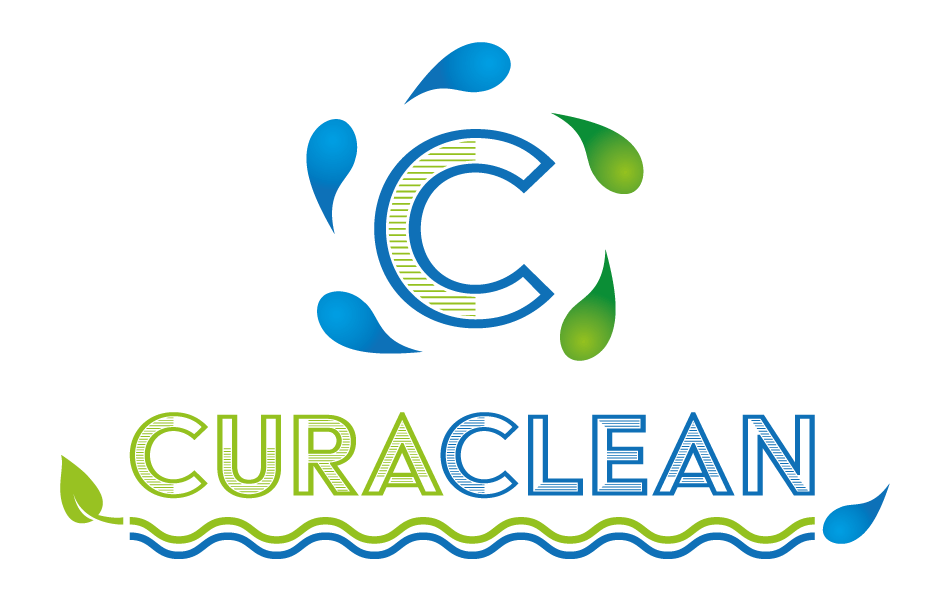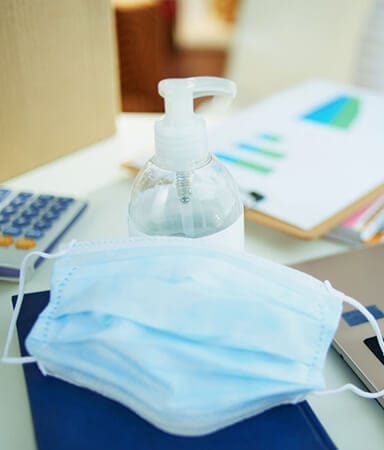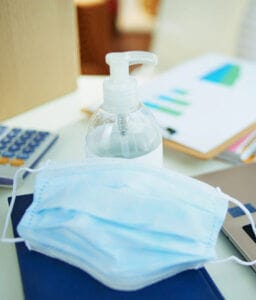In Part 1 of this blog series, we highlighted the challenges that make cleaning and disinfection in the LTC setting different from acute care settings. This blog (part 2) will provide some solutions to tackling these challenges head-on with confidence.
Now that we understand the risks to LTC residents and the challenges, how should we approach cleaning and disinfection in this setting? A great starting point for establishing an effective and efficient program is the CDC’s Core Components of Environmental Cleaning and Disinfection as shown in Figure 3. This guidance takes into consideration that the healthcare environment is a reservoir to a diverse population of microbes, many of which are continuously shed into the environment.
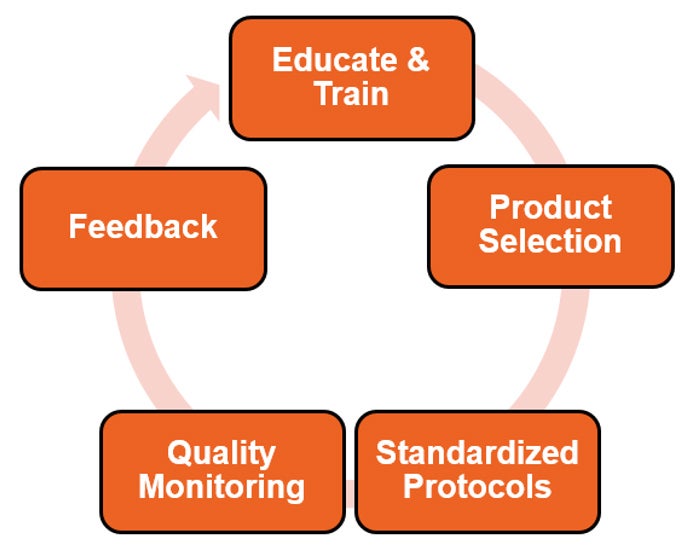
Focusing on the product selection component, CMS requires that EPA-registered healthcare-grade disinfectants are used.1 The LTC IP has oversight for the environmental cleaning and disinfection program so he or she should be involved in product selection and approval. Other product considerations include:
- Ensuring that the product has kill claims for the pathogens of interest for the facility. Examples of key LTC pathogens include the SARS-CoV-2 virus (e.g., COVID-19), Influenza, Norovirus, bloodborne pathogens, Clostridioides difficile and MDROs — including but not limited to MRSA, VRE and Candida auris.2
- The product should also have kill claims for the most common HAI pathogens specific to your facility.
- Limit the number of disinfectants to 2 or 3 with at least one of these being a sporicidal agent such as bleach. Product standardization makes the right thing the easy thing to do.
Regarding where and when to clean in the LTC setting, CMS regulations require routine cleaning and disinfection of LTC environmental surfaces.1 Because CMS does not define “routine,” this is left to the facility to determine and define in their policies. However, the CDC does have a Cleaning Frequency Risk Assessment to help in determining the right frequency by space in a facility. Cleaning frequencies should be based on 3 factors:
- Probability of contamination (e.g., low, moderate or heavy contamination),
- Vulnerability of the population to infection (e.g., less vs more susceptible), and
- Potential for exposure (low-touch surface vs. high-touch surfaces).
While our focus should be on horizontal surfaces and high-touch surfaces (Figure 4), truly all touch surfaces should have a schedule for routine cleaning and disinfection. In general, the CDC recommends daily cleaning at a minimum but also recommends more frequent disinfection of high-touch surfaces as compared to those surfaces with minimal hand contact.23 Additionally, the CDC recommends that public and shared restrooms and isolation rooms are cleaned at least twice daily.22 Shared medical equipment should be cleaned and disinfected after each use.23 Disposable disinfecting wipes will greatly increase compliance and should be readily available at the point-of-use such as the entrance to resident rooms. At a minimum, these wipes should be available at the entrance to isolation or enhanced barrier precautions rooms. If there are resident safety concerns, a risk assessment can be conducted.
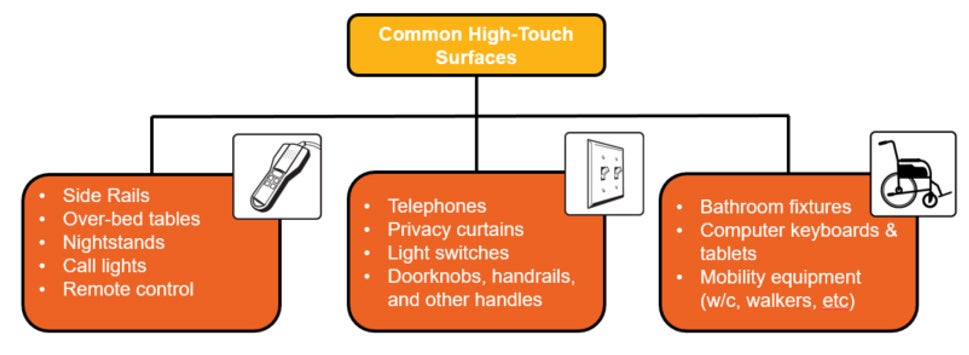
Summary
The LTC setting has its own unique challenges to cleaning and disinfection, but these can be overcome with a robust cleaning and disinfection program. Environmental cleaning and disinfection can stop transmission of many of the pathogens responsible for HAIs in this setting. Bottom line — it’s a low-cost, high-yield, “just-do-it,” evidence-based intervention that eliminates the environment as a source of infection.
References
1. CMS. State Operations Manual-Appendix PP – Guidance to Surveyors for Long-Term Care Facilities, 2017. [Internet]. [Cited 2022 July 16]. Available from https://www.cms.gov/medicare/provider-enrollment-and-certification/guidanceforlawsandregulations/downloads/appendix-pp-state-operations-manual.pdf
2. Richards M. Causes of infection in long-term care facilities: An overview [Internet]. [Cited 2022 May 1]. Available from https://www.uptodate.com/contents/causes-of-infection-in-long-term-care-facilities-an-overview.
3. CDC. HAIs: Environmental Cleaning Procedures. [Internet]. [Cite 2022 May 25]. Available from https://www.cdc.gov/hai/prevent/resource-limited/cleaning-procedures.html
